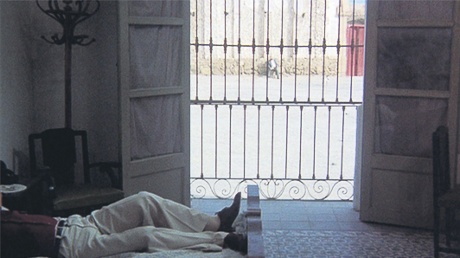The 10 best windows
From medieval stained glass to the sliding sash, our architecture critic selects his favourite windows
Place your suggestion of the best window in the comments below, and your suggestion could feature in the alternative list next week

1 | North Rose Window
Notre Dame, Paris, 1250
Notre Dame, Paris, 1250
It would of course be easy to compile a list of 10 best windows drawn only from medieval cathedrals. This one stands for many, in Chartres, York and elsewhere, and is chosen for the combination of its stone and glass. There are rich colours and story-telling images that delight the inner child, but also the way that heavy minerals are assembled into a membrane that fuses matter and light. Added to which the patterns of tracery are, quite simply, elegant.

2 | The Alhambra
Granada, Spain, 14th century
Granada, Spain, 14th century
It would also not be hard to make a list drawn exclusively from the Alhambra, with its many variations of stone lattices and delicate arches. That the decorative work is filigree, exquisite and astonishingly skilful hardly needs saying. What is really special is the way that raw sunshine is transformed by multiple gradations of shade and reflection into something almost musical. Light hums and vibrates. The views framed are not bad, either, whether of gardens or landscape, making for a nice combination of container and thing contained.

3 | Tugendhat House
Brno, Czech Republic, 1930
Brno, Czech Republic, 1930
To build a wall entirely of glass was, in 1930, rare enough. In the Tugendhat House, Mies van der Rohe went further – planes of glass disappeared into the floor with the help of elaborate contraptions underneath. An uninterrupted flow of space was created between the lavishly exquisite interior, the garden and a fine view of the city beyond. The device might belong to the modern movement, in its use of industrial technology, but it is also distinctly theatrical.

4 | Hotel de la Gloria
Osuna, Spain
Osuna, Spain
In a celebrated seven-minute take in Antonioni’s The Passenger (1975), the camera starts in the room of a still-living Jack Nicholson, and looks as if with his eyes through the iron grate of a traditional Spanish window into a dusty square where characters and passers-by perform a sort of dumb show. The camera passes through the grate and eventually returns to the room, by which time Nicholson has been murdered. If a window is defined by whatever it frames, as well as by the frame itself, this is one of the greats.

5 | Church of St Peter by Sigurd Lewerentz
Klippan, Sweden, 1963-66
Klippan, Sweden, 1963-66
Glass meets brick without a frame. The bricks are rough, set with thick, mushy mortar joints and are never cut to achieve a smooth plane, but project where necessary. The glass, as the material usually is, is sharp and precise. What exactly is good about all this? This is hard to explain to non-architecture nerds, but it is something like the way that Samuel Beckett might, when he wanted, use elemental words. It is about taking the basics of an art and pursuing their logic until they become something unexpected.

6 | Notre Dame du Haut
Ronchamp, France, 1955
Ronchamp, France, 1955
A south-facing wall, rather than a single window, whose many perforations catch and transform multiple aspects of sunlight. Several are set deep with angled reveals, which emphasises the massiveness of the wall and gives the interior the qualities of a cave. Others are dematerialised points of light. Some are coloured, some plain and a narrow horizontal slot at the top makes the huge roof seem to float. What might be a random splatter of rectangles is made convincing by Le Corbusier’s experienced eye and use of proportion. It has been diminished, but not defeated, by the recent breaking of one of the windows.

7 | A Young Woman Standing at a Virginal
Jan Vermeer, about 1670-72
Jan Vermeer, about 1670-72
Tribute must be paid to the Dutch domestic windows of the 17th century. They could be called Protestant, in that their even, lucid light allows little to be hidden. They also don’t bother much with such decadent concepts as comfort, as expanses of glass don’t offer much protection against a cold climate. But they also create mystery, and different levels of privacy and openness, through variations in opacity and the scale of the panes. Vermeer represented these qualities better than anyone else. That this painting offers only a glimpse of a window is part of the point – it’s more about the light that is cast than the window itself.

8 | SESC Pompéia by Lina Bo Bardi
São Paulo, 1982
São Paulo, 1982
For no apparent reason, a tower of sports courts is fenestrated with randomly shaped holes seemingly punched in its concrete walls. They are unglazed and closed only with sliding red latticed shutters on their inner face. They are primitive and physical, and call to mind Themroc, the 1973 film about someone who lives like a caveman in modern Paris. Like that movie, they constitute a shout of protest against an overly processed urban culture. Inside, they beautifully frame views of the city, and cast great shadows.

9 | The sliding sash
Circa 17th century
Circa 17th century
A generic type, born of practical considerations and some notion of classical proportions, that lasted centuries, because it did its job well. Invented in the 17th century, it became the standard window of Georgian and much Victorian domestic architecture. A good sash, especially if accompanied by deep reveals, modulates light beautifully, is easy to clean from inside and allows simple but effective ventilation. When they are open, the space at the top lets warm air out and the one at the bottom lets cooler air in. Their downside is that they can rot and when the ropes on their counterweights break, they become frustratingly unfunctional.

10 | Crittall windows
Early 20th century
Early 20th century
The spare, elegant, steel-framed windows were developed by the British manufacturer Crittall in the early 20th century and are still made today. Without them, much of 1930s architecture would have looked completely different, as indeed would large numbers of Hercule Poirot TV dramas. At one level, they are updates of sash windows, practical responses to the construction techniques available at the time. They are also democratic: Crittalls were used on Coventry Cathedral and other notable modern buildings, but could also give suburban semis an exotic moderne touch.










